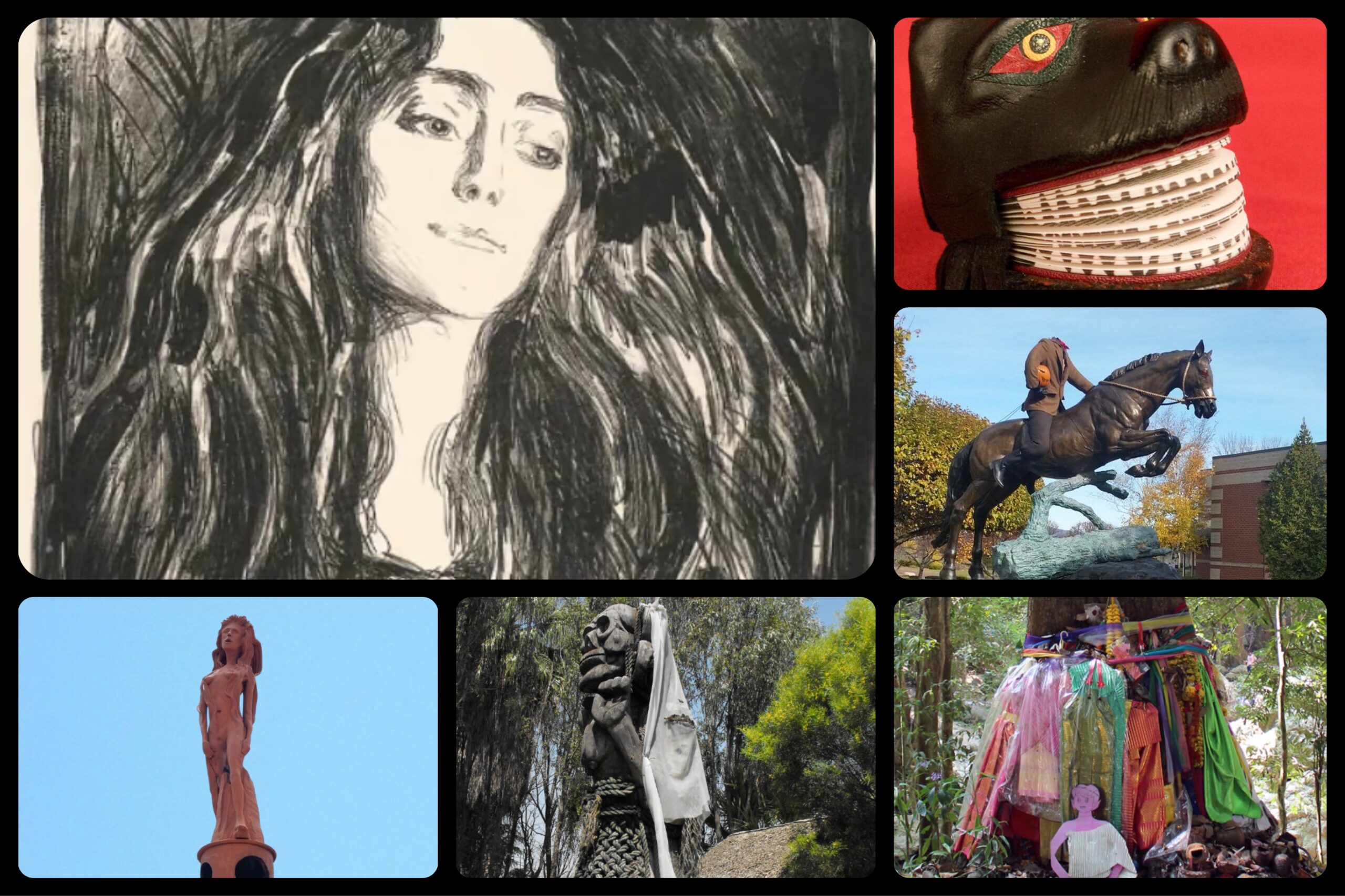As a species, our intrigue with death finds expression in the diverse beliefs and narratives we hold about the afterlife. Ghosts, however, defy uniformity. Beyond the stereotypical image of specters draped in white sheets, the origins and tales of ghosts can take on hauntingly violent and terrifying forms. These narratives vary greatly depending on one’s geographical location, as each culture weaves its unique interpretation and variations of the posthumous realm. Today, we embark on a journey to explore the most chilling and captivating ghost stories from across the globe.
20. The Pishacha

The Pishacha, in Hindu theology, emerges as a vampire-like spirit, infamous for its macabre penchant for feasting upon the flesh of both the living and the deceased. According to these beliefs, their predilection extends to pregnant women, a haunting detail that adds to their sinister reputation. These entities are often described as humanoid in form, distinguished by their bloodshot eyes and distended veins that snake across their bodies. Their favored haunts include cremation and burial grounds, forsaken abodes, and locations marked by tragic and violent ends.
It is said that the Pishachas have existed since time immemorial, possessing extraordinary supernatural abilities such as invisibility and the power to assume various shapes at will. These spirits are notorious for their capacity to influence and inhabit the minds of humans, driving their hosts towards negative thoughts and behaviors, all while they savor the turmoil and suffering that ensues from their possession.
19. Mae Phae Wah, The Yellow Ribbon Lady

Ma Phae Wah, recognized as a Nat in Myanmar, embodies the role akin to that of a harbinger of death found in Hindu and Buddhist traditions. In Myanmar, she assumes the role of a guardian for cemeteries and burial grounds. Taking on a human guise, Ma Phae Wah appears as a woman with flowing, ebony hair. In the depths of the night, she delivers a foreboding omen, presenting a coffin at the doorstep of those marked for ill fate. Shortly thereafter, someone within that household falls gravely ill and succumbs to death.
This spirit harbors a particular fascination with the souls of young children, with accounts suggesting her unsettling interest in sending visions to a monk, wherein she confesses her sinister desire to consume infants.
18. The Pontianak

The ‘Pontianak,’ also known as ‘Kuntianak,’ embodies a vengeful spirit entrenched in Southeast Asian folklore, assuming the alluring form of a beautiful woman. This spectral entity preys upon men, children, and vulnerable wanderers who venture into the murky depths of the swamp. Often believed to be the restless soul of a woman who met a tragic end, either through childbirth or v!olent circumstances, the Pontianak ranks among the most formidable and dreaded figures in the realms of Indonesian and Malaysian legends.
One renowned Pontianak legend recounts the tale of a daring man who chose to settle near the very swamp that the Pontianak called home, heedless of the dire warnings from locals. As he undertook the construction of a new town, the Pontianaks chose to reveal their presence with a series of relentless assaults on the builders. In a desperate bid to vanquish the Pontianaks, cannons were fired into the swamp, ultimately succeeding in destroying their nest and bringing an end to the malevolent spirits.
17. The Daughter of Hui Bi Hua
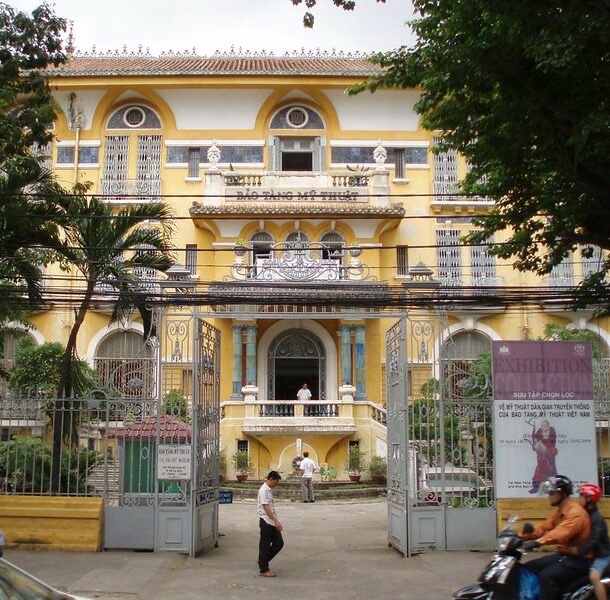
The Vietnamese legend of “The Daughter of Hui Bi Hua” revolves around the spectral presence of a young girl haunting what is now the Ho Chi Minh City Museum of Art. This historical edifice once belonged to the family and business of Hui Bi Hua, an immensely affluent realtor who laid claim to approximately 20,000 properties throughout the city.
According to the legend, the young girl fell victim to leprosy during a widespread epidemic, leading to her seclusion in an upper-floor bedroom. There, she endured years of confinement, with loneliness and the anguish of isolation ultimately driving her to madness, culminating in her tragic decision to end her own life. Ever since, numerous accounts have surfaced, describing ghostly apparitions of a woman wandering the building’s corridors and the haunting sounds of inconsolable weeping echoing through the halls, particularly in the stillness of the night.
16. The Black Dog
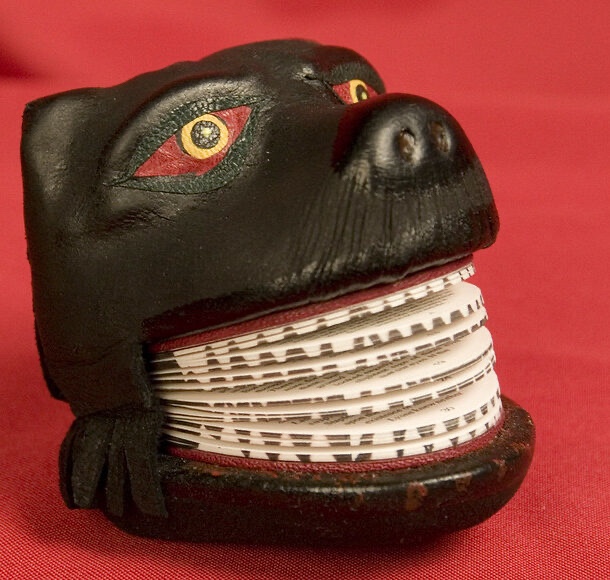
The “Black Dog” is a spectral phenomenon entrenched in the folklore of the British Isles. It is regarded as an ominous harbinger of impending death, with those who cross paths with it said to meet their demise shortly thereafter. This apparition typically assumes a size larger than that of an ordinary dog and is often described with strikingly large, luminous red eyes.
The origins of the Black Dog remain shrouded in mystery, but its eerie presence has left an indelible mark in literary works. Notable examples include Arthur Conan Doyle’s “Sherlock Holmes” novel, “The Hound of the Baskervilles,” and its appearance in the realm of fantasy literature, such as “Harry Potter and the Prisoner of Azkaban.”
15. Dullahan
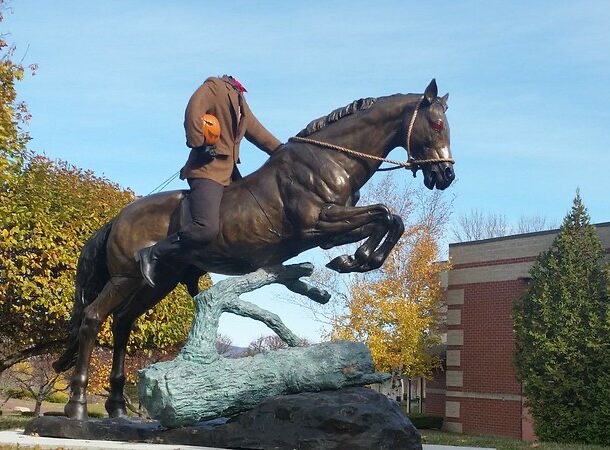
The Dullahan, a figure from Irish folklore, serves as a precursor to the more widely recognized headless horseman of American tales, sharing a strikingly similar description. Diverging from the role of the Banshee in Irish folklore, the Dullahan summons the departed souls rather than acting as a harbinger of impending events.
Much akin to the headless horseman archetype, the Dullahan is depicted riding atop a formidable black steed, carrying its severed head in hand. In Ireland, the Dullahan is said to roam after midnight during specific Irish festivals, typically occurring around the end of August or early September. A longstanding tradition persists to this day, as people in Ireland continue to remain indoors with drawn curtains during these eerie post-festival hours.
14. Banshee of Ireland
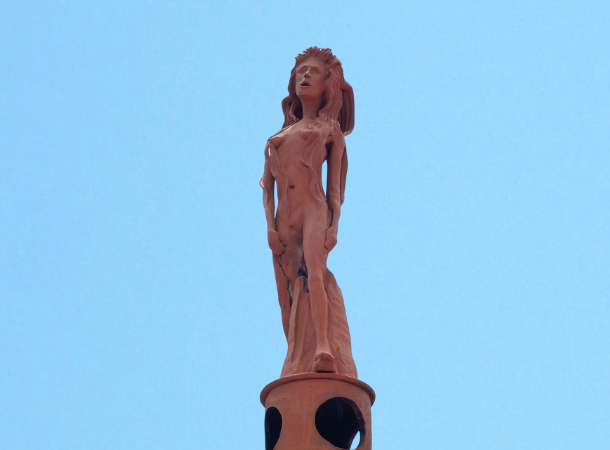
The ethereal folklore of the Banshee in Irish tradition has been handed down through countless generations. While these tales have evolved over centuries, some legends suggest that the Banshee is the restless spirit of a young woman who met a v!olent and horrifying demise. The gravity of her death has left her bound to the duty of watching over families and loved ones, serving as a spectral harbinger of impending doom.
According to folklore, the Banshee possesses the ability to assume various forms. In Ireland, she is most commonly described either as a bewitching, youthful woman adorned with cascading silver, white, or sometimes red hair, or as a wretched, aged figure clad in tattered rags, with disheveled gray hair, elongated fingernails, and grotesquely pointed, decaying teeth. Both manifestations are marked by her eyes, rendered unmistakably red from incessant weeping.
13. Dybbuks
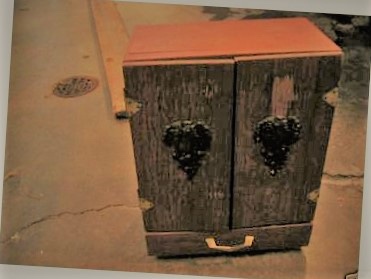
The Dybbuk, a figure from Jewish folklore, represents a spectral entity often associated with the lingering soul of a departed individual burdened by unresolved regrets from their earthly existence. Dybbuks seek to inhabit the living, compelling them to address these unfulfilled desires and ambitions. While some Dybbuks harbor malevolent intentions, driven by a thirst for vengeance over past grievances, others may pursue benevolent objectives. Intriguingly, certain Jewish mystics even willingly invite Dybbuk possession, guided by the belief that this allows the spirit to achieve its purpose.
Invariably, Dybbuks tend to transcend their existence once they attain their objectives, regardless of whether their intentions were noble or malevolent. As the outcomes of their influence may not always yield positive results, Jewish rituals exist to exorcise these spirits when necessary.
12. Krahang

The Krahang, a ghostly entity hailing from Thailand, materializes as a shirtless man soaring through the night skies, clutching a pair of rice baskets. Its eerie pursuit is directed at solitary pedestrians, making them the target of its nocturnal assaults. Interestingly, in the daylight hours, the Krahang seamlessly disguises itself as a living person, blending into the surroundings.
Rooted in the rich tapestry of traditional Thai oral folklore, the Krahang has garnered a more contemporary name over time. Notably, this legend has been increasingly woven into Thai media narratives in recent years. A prominent case emerged in 2017 when purported sightings of a Krahang were linked to a series of assaults in Northern Thailand. In response, local communities resorted to traditional exorcism rituals, which, to their dismay, appeared ineffective in banishing the relentless presence of the Krahang.
11. Gjengangere
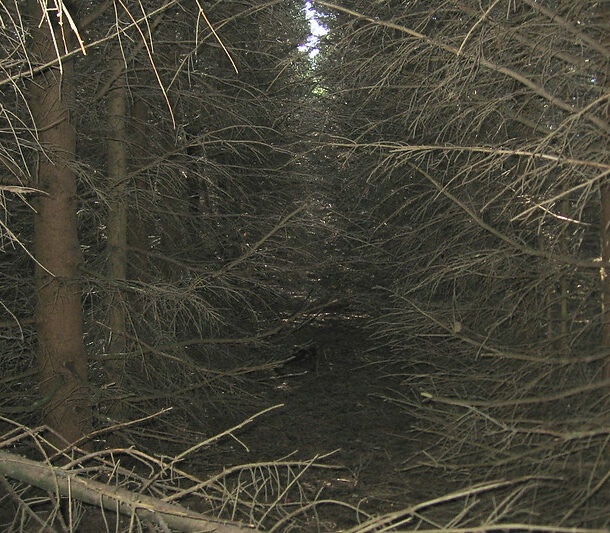
Gjengangere, hailing from Scandinavia, represent a distinct variety of spirits in the realm of folklore. They embody the restless souls of the departed, driven by an unsettling desire to ensnare additional individuals in death’s embrace. Most often, gjengangere comprise either murderers or their unfortunate victims. Nevertheless, there exist exceptions, where these entities are individuals whose life was marred by profound and enduring regrets.
What sets gjengangere apart from other ghostly apparitions is their uncanny ability to appear utterly lifelike, frequently leading to them being mistaken for the living. In Scandinavian folklore, the emphasis lies less on placating these spirits and more on averting the transformation of the deceased into gjengangere. The most effective safeguard involves the meticulous observance of traditional Christian funeral rites, which serve as a protective barrier against the emergence of these haunting entities.
10. Mae Nak

Mae Nak, a female ghost of Thai folklore, is said to have originated in the late 19th century during the reign of King Rama IV. According to the tale, a man named Mak wed a woman named Nak, and she became pregnant. However, before she could give birth, Mak was called to serve in the army, leaving Nak behind. In Mak’s absence, she gave birth but tragically perished along with their child before his return.
Upon Mak’s homecoming, he was greeted not by his living family but by the apparitions of his deceased wife and child. Recognizing their spectral nature, he sought refuge in a temple where Nak’s spirit could not enter. In retaliation, Nak’s vengeful spirit unleashed terror upon the local community until an exorcist attempted to confine her, regrettably failing in the endeavor.
Today, a shrine in Bangkok stands as a tribute to Mae Nak, in the hope of appeasing her restless spirit and granting her the solace needed to move on from this world.
9. La Llorona
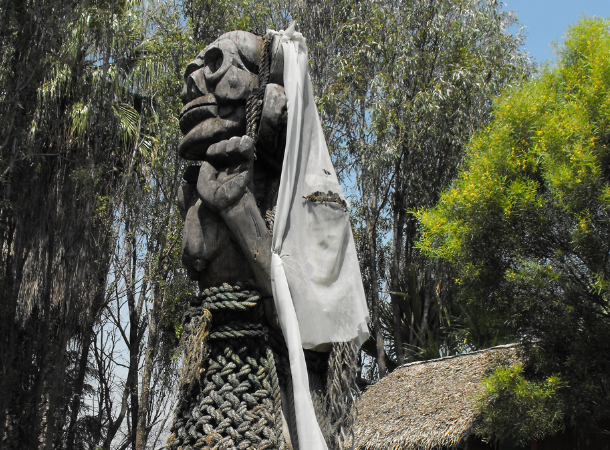
La Llorona, originating from Mexican folklore, tells the haunting tale of a woman who marries a wealthy man and bears two children. Tragically, one day she witnesses her husband with another woman and, consumed by rage, she responds by drowning her own offspring. Overwhelmed by remorse and understanding the enormity of her actions, she subsequently takes her own life. This grim sequence of events condemns her spirit to an eternal wander, tirelessly scouring the Earth in search of the children she tragically took.
This spectral figure has made appearances in various forms of media, often under different names and origins, yet the essence of the legend invariably traces back to the roots of the original Mexican folklore.
8. Phi Am
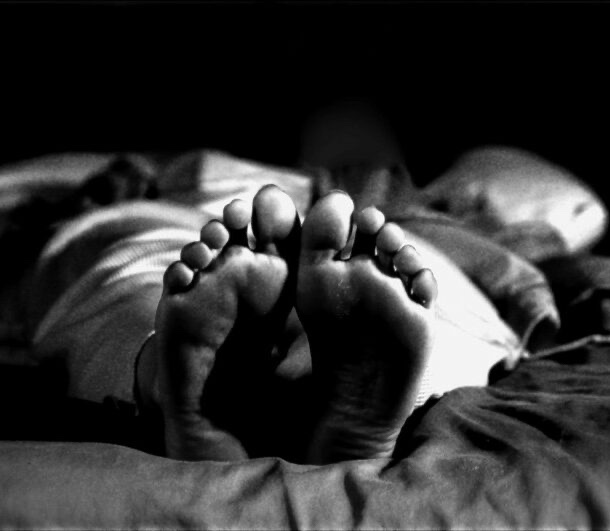
The Phi Am has become indelibly linked to the phenomenon of sleep paralysis in Thailand. This spectral entity is believed to perch upon the chests of its unfortunate victims in the dead of night, rendering them immobilized while inflicting terrifying nightmares. The paralysis, in particular, serves to prevent the afflicted from awakening abruptly or calling out for assistance.
Such is the profound influence of this belief on Thai culture that medical professionals in Thailand have adopted the term “Phi Am” as a synonymous reference for sleep paralysis, underscoring the potent cultural impact this ghostly presence has had on the understanding of this medical condition.
7. Nang Takian
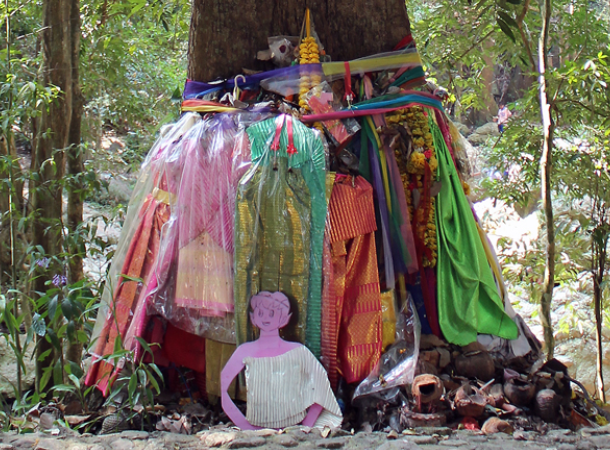
The Nang Takian, a spectral presence in Thailand, assumes the role of a guardian spirit specifically associated with ta-khian trees. As long as one refrains from desecrating these trees, there is no cause for concern in encountering this spirit. However, disrespect or harm inflicted upon these trees will undoubtedly incur the wrath of the Nang Takian.
It is believed that those dwelling in homes constructed from ta-khian wood may be fated to endure misfortune or encounter other supernatural occurrences. Nevertheless, there are exceptions. Buddhist monks, for instance, are occasionally granted respite from the spirit’s ire, provided they undertake specific rituals to appease this guardian entity.
5. The Pocong

The Pocong, stemming from Malaysian and Indonesian culture, is a ghostly entity deeply intertwined with the funeral customs of the region. To comprehend this apparition, one must first acquaint themselves with the prevailing funeral rituals. In this part of the world, when an individual passes away, their body is enshrouded in a ceremonial cloth, known as a Shroud. This cloth tightly envelops the deceased, with only their face exposed, and the top securely fastened in a bow.
This Shroud-clad state endures for slightly over a month, after which it becomes imperative to remove the shroud from the deceased. Failure to do so results in the spirit becoming trapped within its decaying body, haunting the very family members responsible for the oversight. Utilizing their gruesome appearance and putrid odor, they torment their loved ones until someone takes the initiative to unwrap the shroud, thus liberating the lingering spirit.
4. Gashadokuro
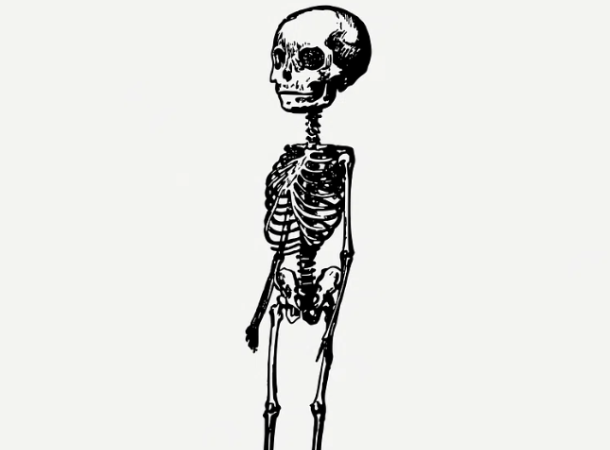
Gashadokuro, which translates to “starving skeleton,” serves as a fitting depiction of this spectral entity. It materializes in locations where a multitude of skeletons lie, often in the aftermath of a devastating famine or disease that has plagued a village. These unfortunate souls met their end without the solace of a proper burial or the observance of funeral rites. Consequently, their souls and bones coalesce to create a colossal skeleton, roughly fifteen times the size of an average person.
This formidable skeletal apparition then seeks sustenance by preying on solitary travelers. Its preferred method involves decap!tating its victims and feasting upon their bones, thereby perpetuating its ominous existence.
3. The Flying Dutchman
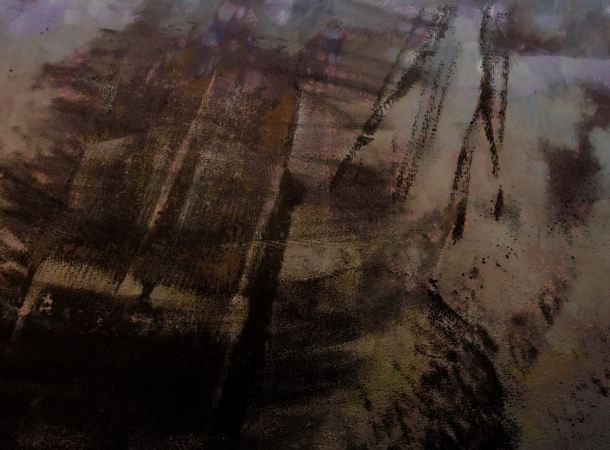
The Flying Dutchman stands as the most renowned exemplar of what is commonly known as a ghost ship. These ghostly vessels typically represent the lingering echoes of ships that have met their demise at sea, but the Flying Dutchman remains unparalleled in terms of fame and notoriety.
The tale has been recounted in myriad forms throughout history, yet the original version narrates the story of a Dutch captain named van der Decken. He adamantly refused to seek refuge in a safe harbor during a perilous storm while navigating the treacherous waters of the Cape of Good Hope, despite impassioned pleas from both the crew and passengers. Instead, he defiantly challenged the heavens to unleash their fury upon the ship. Swiftly, their divine wrath struck the vessel, sealing its fate. The heavens subsequently cursed the ship, condemning it to eternally wander the open seas, forever denied a safe harbor.
While its origins are Dutch, the legend of the Flying Dutchman has transcended borders and been recounted as a ghostly tale worldwide for centuries. Each retelling adds unique variations to the core narrative, making it a timeless and enduring story.
2. Mecho Bhoots
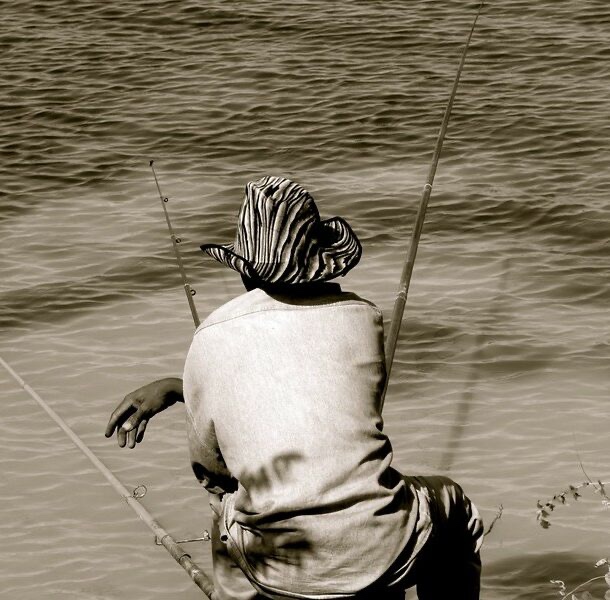
Mecho Bhoots, stemming from Bengali culture, are the spectral echoes of fishermen who tragically met their demise by drowning. These spirits are renowned for their unquenchable appetite for fish. Fortunately, these fish-loving ghosts are not notably v!olent or vengeful; their primary desire is simply to indulge in fish.
Their haunting grounds primarily encompass lakes and ponds, where they persistently search for fish. On occasion, their yearning leads them to venture into nearby villages, where they may pilfer kitchens in their quest for fish. There have even been accounts of Mecho Bhoots beseeching fishermen and travelers for a share of their fishy bounty.
1. Skondhokatas

The Skondhokatas, enigmatic figures in Bengali folklore, are ghostly entities with tales of their origins evolving alongside the passage of time. In the 19th century, they were portrayed as vengeful and perilous spirits, known for their tendency to assault and ensnare individuals to aid them in their relentless quest to recover their sev*red heads.
In contemporary times, the Skondhokatas are frequently regarded as the restless spirits of individuals who met their demise through beheadings in railway accidents. These specters are said to haunt the very train stations where their tragic end occurred. Fortunately, they are believed to possess a vulnerability stemming from their lack of sight, making them susceptible to trickery and deception.
